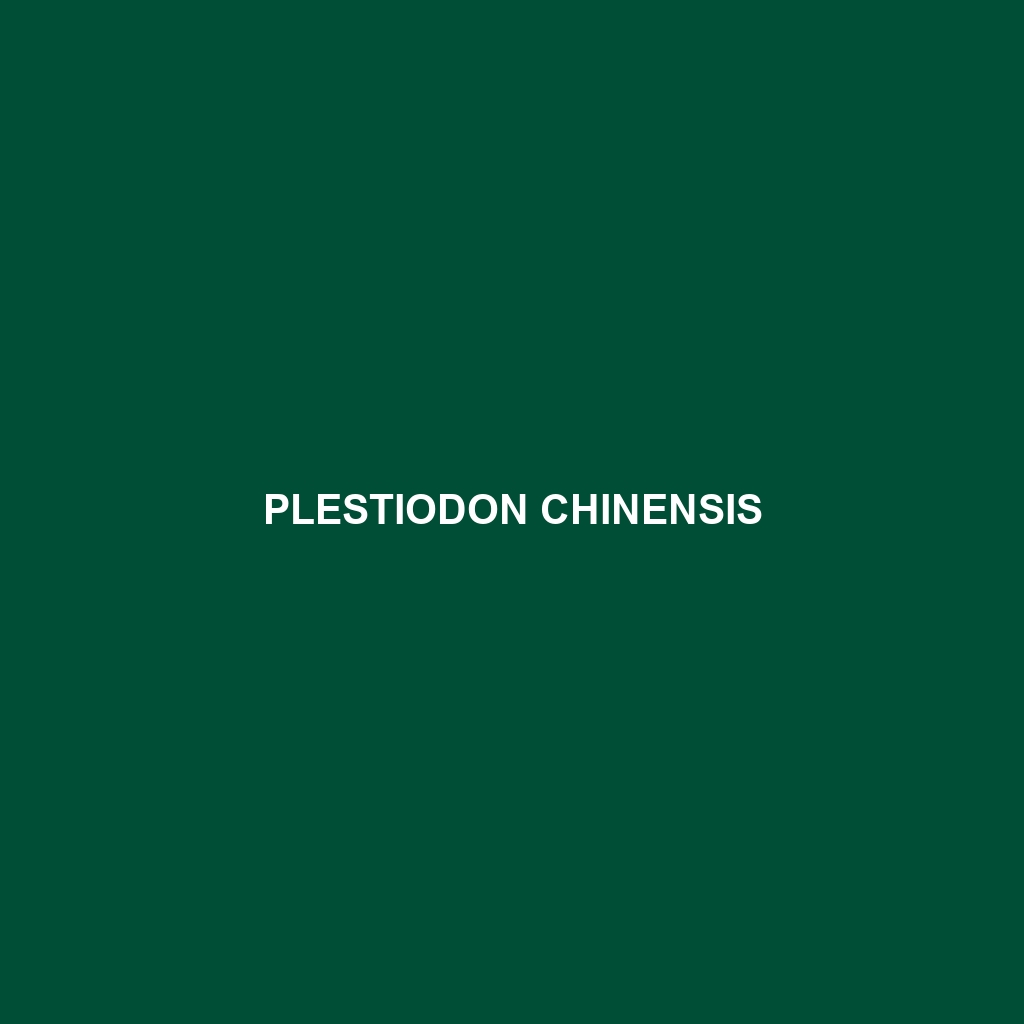Common Name
Plestiodon chinensis
Scientific Name
Plestiodon chinensis
Habitat
Plestiodon chinensis, commonly known as the Chinese skink, is primarily found in a variety of habitats across East Asia. Its geographical distribution includes regions in China, Taiwan, and parts of Southeast Asia. This species thrives in diverse environments, such as temperate forests, grasslands, and even agricultural lands. With a preference for warmer climates, Plestiodon chinensis favors areas where the temperature remains moderate and consistent throughout the year. Often spotted in leaf litter and under rocks, this skink has adapted to live both in humid, rainforests as well as drier savanna-like regions. Its adaptability to different environmental conditions contributes to its successful survival across various geographic locations.
Physical Characteristics
Plestiodon chinensis exhibits striking physical attributes that make it easily identifiable. Generally, adults range from 15 to 30 centimeters in length, with a sleek and elongated body showing a smooth surface texture. The coloration of this skink is primarily a vibrant blue-black, accented with prominent white or yellow stripes that run along its body, offering a distinct contrast that helps in camouflage against predators. Additionally, their limbs are short but strong, allowing for agile movements across their habitat. Unique features of Plestiodon chinensis include its elongated tail, which can regenerate if lost, and their large, protruding eyes that provide excellent vision.
Behavior
In terms of behavior, Plestiodon chinensis displays notable traits that pique the interest of researchers and enthusiasts alike. Typically, this species exhibits diurnal behavior, meaning it is active during the day, often basking in the sun to regulate body temperature. Social interactions among individuals can be observed during mating seasons, where elaborate courtship rituals take place. These small lizards exhibit territorial behavior, especially males, who are known to display aggressive postures when competing for mates. Additionally, Plestiodon chinensis is often seen foraging for food and may utilize crevices in rocks or dense foliage to hide from potential predators.
Diet
Plestiodon chinensis has been classified as an insectivore, primarily feeding on a diet that consists of insects and other small invertebrates. Their hunting strategy involves active foraging, where they use their keen eyesight to spot prey. Common food sources include crickets, beetles, and ants. Occasionally, Plestiodon chinensis may consume plant material and other organic matter, which places it in a broader dietary category of omnivores. Their feeding patterns vary with the seasons, showing an increased activity in warmer months when prey is plentiful.
Reproduction
The reproductive cycle of Plestiodon chinensis typically occurs during the warmer months, specifically from late spring to early summer. Mating season is characterized by courtship behaviors that include head-bobbing and chasing between males and females. Following successful mating, females usually lay eggs in concealed nests in the ground or under leaf litter. The gestation period can vary, but offspring typically hatch around 30 to 60 days later. Each clutch can consist of up to 10 to 20 eggs, depending on the size and health of the female. After hatching, the young skinks exhibit independence almost immediately, relying on their instinctual behavior to fend for themselves.
Conservation Status
The conservation status of Plestiodon chinensis is currently classified as Least Concern according to the IUCN Red List. This status indicates a stable population trend, primarily due to its adaptability to various habitats. However, localized threats such as habitat destruction and pollution remain challenges that could impact future populations. Conservation efforts are being undertaken in some regions to monitor the population and mitigate these threats, ensuring that the species continues to thrive in its natural ecosystem.
Interesting Facts
One fascinating aspect of Plestiodon chinensis is its incredible ability to regenerate its tail after losing it due to predation or stress. This unique adaptation not only serves as a defense mechanism but also enables the lizard to survive and thrive in environments rife with danger. Additionally, these skinks are known for their diverse range of vocalizations, which they use during social interactions, particularly in establishing territory and during mating rituals. Such vocal abilities are relatively uncommon in lizards, making Plestiodon chinensis a species of great interest to herpetologists.
Role in Ecosystem
Plestiodon chinensis plays a significant role in its ecosystem as both a predator and prey. As an insectivore, it helps control the population of various insects, aiding in maintaining healthy ecological balance. Moreover, it serves as a food source for larger predators, thus contributing to the food chain dynamics. The presence of Plestiodon chinensis in its habitat indicates a healthy environment, as these lizards are sensitive to changes in their surroundings. Their role in nutrient recycling and as potential indicators of environmental health underscores their ecological importance.
